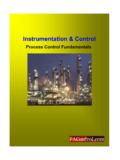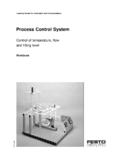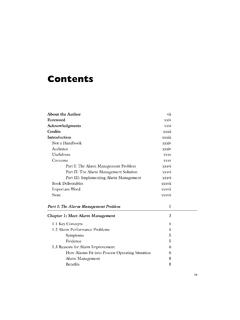Transcription of Focusing On The Fundamentals - Water Today
1 Focusing On The FundamentalsBy Alfa LavalThe ChallengeVirtually all commercial and industrial activities produce waste products that have to be disposed off, but are harmful to for the environment unless treated. Virtually all such activities result in the production of sludge that is normally of little or no commercial value, but is bulky and costly to transport. Disposing of such sludge responsibly represents a big wastewater treatment plants produce residual sludge. The majority of such plants have to install special processing equipment to minimise the costs and the environmental impacts associated with processing, transporting and disposing of this Processing TechnologiesThe products most commonly used in sludge treatments are drum thickeners for reducing sludge volume by as much as 90%, and decanter centrifuges for subsequent sludge equipment widely used in wastewater treatment includes spiral heat exchangers and membrane filtration New GroundHowever, one particular new product range has been attracting considerable worldwide attention because it represents a major shift in the basic commercial equations behind separating the liquid and solid components in sludge Laval recently launched the breakthrough ALDEC G3 decanter centrifuge.
2 This unique design represents a practical revolution in decanter centrifuge performance and energy efficiency, introducing new parameters for what companies can achieve with their sludge separation operations. These include: Savings of as much as 40% on energy costs for any given separation capacity Increases of up to 10% in sludge processing capacity for any given equipment footprintIn the specialised world of removing Water from sludge, technical progress usually consists of small increments and marginal, evolutionary improvements. It is relatively rare that Figure 1: ALDEC G3 decanter centrifuge68 Water Today l April - 2011the basic performance benchmarks and operating parameters get altered in such a big way, which is exactly what has happened with the introduction of the ALDEC G3 innovative design of the new ALDEC G3 decanter centrifuge range delivers 10% better performance capacity while reducing power consumption for any given separation capacity by as much as 40%.
3 This can reduce power consumption by as much as kW/hour, per cubic metre of sludge, which in turn reduces CO2 emissions and environmental impacts. These dramatic savings stem from the Slimline configuration, and from the use of patented Alfa Laval s Power Plates . These are an integral part of the ALDEC G3 design, and reduce the loss of kinetic energy when the liquid leaves the G3 decanter centrifuges are also equipped with an Alfa Laval 2 Touch control package as a standard practice. This makes it easy to fine-tune and improve productivity throughout the service life of each ALDEC G3 Separation Much More EfficientThe new ALDEC G3 decanter centrifuge features multiple innovative design features that combine to provide significant improvements in separation performance. These include a steep cone angle, the Slimline design with progressive pitch, and patented energy-saving power smaller conveyor diameter makes room for more liquid in the pond, resulting in increases of up to 10% in the separation capacity for any given equipment footprint.
4 Moreover, the Water Today l April - 2011 69higher hydraulic pressure inside the bowl means only the very driest fraction of the sludge cake passes into the casing through 360 of solids discharge openings, resulting in either drier cake or using less BenefitsALDEC G3 decanter centrifuges for sludge separation ensure: Up to 40% lower power consumption, and reduced CO2 emissions 10% boost in processing capacity or drier cake Lower polymer consumption More efficient bio-solids handling Lower operating and maintenance costs More accurate process monitoring and ALDEC G3 decanter centrifuge design provides significantly improved separation results and better control of all the variables, using up to 40% less energy. Lower power consumption saves money while also improving environmental addition the unique ALDEC G3 design enables the operator to work with different combinations of: bowl speed, conveyor About The ArticleThis article has been contributed by Alfa Laval.
5 Alfa Laval is a world leader in sludge separation technologies and has now rewritten the rules on ensuring profitability in wastewater treatment facilities. , pond depth and feed rate to meet each operator s changing needs and different The Real CostsThe big lesson to be learned from this latest separation technology breakthrough is that it is now possible to significantly reduce the day-to-day operating costs of sludge separation installations in both industry and the public sector, and for both contractors and with overall long-term responsibilities for running a dewatering facility need to do a thorough assessment of the operating costs that pile up day after day, instead of just Focusing on the upfront purchase price. The unique ALDEC G3 design has just made running such facilities a whole lot 2: Slimline conveyor70 Water Today l April - 2011








